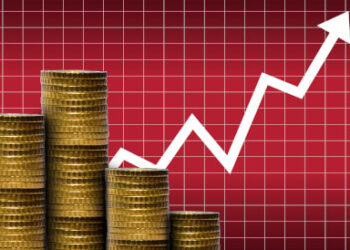Market pundits are largely in agreement that the Reserve Bank of Australia (RBA) is unlikely to consider a rise to the cash rate in its next meeting, after the latest price indicator demonstrated inflation, while sticky, appears to be improving.
The consumer price index (CPI) rose 1 per cent in the June quarter and 3.8 per cent annually, according to the latest data from the Australian Bureau of Statistics, and was largely in line with market expectations.
The quarterly trimmed mean, considered a key underlying measure of inflation, surprised to the downside at 3.9 per cent year-on-year, compared with market expectations of 4 per cent, though it fell modestly above RBA forecasts of 3.8 per cent.
With this, economists believe the RBA is unlikely to feel the need to lift its cash rate when it meets next week on 5–6 August.
The June quarter consumer price inflation report is “good enough to likely rule out an interest rate increase from the Reserve Bank next Tuesday”, said David Bassanese, chief economist at Betashares.
“I think [a rate hike is] very unlikely – today’s numbers are not bad enough to likely require the RBA to revise up its inflation forecasts within next week’s August Statement on Monetary policy.”
However, while the economy has “dodged a bullet” with regard to a potential rate rise in August, Bassanese warned the “RBA’s gun remains loaded” and “could still be fired this year” if inflation fails to show further declines from what remain uncomfortably high levels.
“My base case is that inflation will fall further – though this also assumes the economy and consumer spending, especially, will remain reasonably soft, with the unemployment rate rising to 4.5 per cent by year-end,” Bassanese said.
“This could still see the RBA actually cut rates later this year or at least in the first half of 2025.”
CreditorWatch chief economist, Anneke Thompson, also observed the latest data is “unlikely” to convince the RBA Board that another rise to the cash rate is warranted.
“Demand from consumers has very clearly tightened for some time now, and volatile items are the main contributor to those higher-than-expected monthly CPI releases,” Thompson said, noting some of the most significant price rises were in housing, food, alcohol and tobacco, and surprisingly, clothing and footwear.
HSBC chief economist Paul Bloxham noted core inflation appears to be easing, albeit to a slower degree than the RBA would have been hoping.
“We think a 10 bp upside surprise to the core measure will be something RBA will be prepared to look through, given that headline CPI was in line with its expectations and the core measure is still showing that disinflation continues,” he said.
“However, at the same time that today’s number suggests that another rate hike is unlikely, it still suggests that inflation is sticky, elevated and only falling very slowly.
“With this in mind, we also expect that rate cuts are still quite some time away. Since late 2023, our view has been that the RBA was unlikely to cut in 2024, as inflation would fall only slowly, and that rate cuts were not likely until 2025.”
For State Street Global Advisors’ APAC economist, Krishna Bhimavarapu, the CPI data came in “just a touch” above their dovish expectations, however, it reiterates the view that interest rates “are restrictive enough in Australia”.
Bhimavarapu forecasts a rate cut could be closer than expected, proposing the RBA’s next move could “very likely” be a cut in November.
Testing RBA’s tolerance for inflation
According to Russel Chesler, head of investments and capital market at VanEck, Australia is “not out of the woods” just yet and unless inflation falls, the RBA “may still hike rates this year”.
“We are a long way from a rate cut,” he said.
“The RBA has previously stipulated a low tolerance for a slower-than-expected return to target, suggesting it is amenable to measures that stimulate more downward pressure on inflation if needed.”
Chesler pointed out inflation has been forecast to reduce to 3.5 per cent by Christmas; however, there has been little indication to suggest a sustained improvement in the main pressure points keeping inflation high, namely housing, wages, and services.
“It has been nine months since the last rate hike, 14 months since the start of the tightening cycle, and 13 rates hikes that have added 425 basis points to the official cash rate. Notwithstanding inflation being in line with the RBA’s forecast, Australia still stands out as having the highest rate of inflation in the developed markets,” he said.
Bob Cunneen, senior economist and portfolio specialist at MLC Asset Management, pointed out the RBA has “held fire” for a considerable time hoping that inflation would cool.
“[It] is understandably frustrated that inflation remains above their 2 per cent to 3 per cent target band,” he said.
Moreover, significant recent research by the central bank has suggested financial conditions for consumers are already “very tough”, Cunneen said.
The economist said that, while the RBA’s primary tool to cull inflation is to raise interest rates to slow demand, Australia’s current sticky inflation problem reflects a mix of causes that primarily relate to supply constraints.
“The surge in insurance, medical and rent expenses reflects various long-term challenges such as limited competitive forces (for insurance and health) and chronic undersupply (lack of new housing construction to match population growth is driving up rents),” he said.
“However, raising interest rates again fails to address supply constraints and risks being the catalyst to tipping Australia into recession.”
Cunneen remarked raising rates would prove to be the “wrong medicine” for Australia’s inflation illness.







